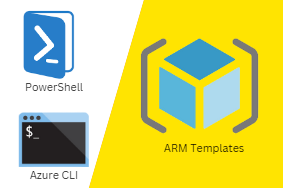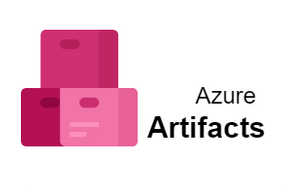What Is Google Cloud? Google Cloud is a collection of cloud computing services by Google. It includes infrastructure services, such as Compute Engine and App Engine, and developer tools, such as Google Cloud SDK, Cloud Storage, and APIs. The platform provides services that enable developers to build, test, deploy, and maintain applications on the internet.
What is Google Cloud?
The Google Cloud Platform is a set of integrated cloud services that enables developers to build, deploy, and scale applications on a shared set of compute resources. At its most basic level, it’s composed of computing power (Google Compute Engine), data storage (Google Cloud Storage), database tools (Google BigQuery), application development tools (including App Engine standard environment and Google APIs), language libraries (Cloud Dataflow) and a wide variety of other products.
Why Use Google Cloud?
With so many different kinds of cloud hosting out there, it can be hard to know which one is right for you. That’s why we put together a list of some of our favorite features to help you make a decision.
How Does it Work?
The Google Cloud Platform includes a suite of services to assist you in developing, deploying, and managing applications. Two of these—App Engine and Compute Engine—provide easy-to-use development platforms that allow you to build and run your applications on cloud infrastructure with minimal time spent managing servers or worrying about operations. This is particularly important because developer time is often one of most valuable resources any company has. App Engine is used by many companies as a scalable solution to their web hosting needs; it helps them focus on their business logic rather than scaling hardware or maintaining their own server farms. Google App Engine allows developers to use programming languages including Python, Java, Go and PHP; other parts of GCP include Big Data offerings like BigQuery and Dataflow; storage solutions such as Cloud Storage (which can scale from petabytes down to gigabytes) along with powerful machine learning capabilities such as TensorFlow, among others! If there’s something you need to build, chances are good there’s an app engine available that already does what you need: upload some code and be up and running in minutes. We won’t even get into APIs or Bots here! For those interested in diving deeper into all things Google Cloud related, take a look at our annual What’s New Next conference held each year just before I/O starts which features keynote talks from folks on all things cloud at Google.
Section #1 – Basic Compute Engine ( VMs, Instances)
The Compute Engine is an offering from Google that allows users to run virtual machines on their cloud servers. This means that you can host VMs on their platform, including Windows and Linux based operating systems. The Compute Engine also enables users to create instances, which are pre-configured virtual machine images that come with a full set of binaries (software) already installed. Instances enable developers to build applications rapidly without having to spend too much time installing software packages. You get your instance, hit start, and away you go!
Section #2 – App Engine ( Web Apps, APIs)
App Engine is a development platform that allows users to create and deploy web applications on Google’s servers. It’s an easy way to create your own web applications, because it automatically handles many of the mundane tasks required to run a website, including hosting, scaling and updating your site. App Engine is also integrated with Google Analytics, so you can track usage without extra programming. Since it runs on Google’s infrastructure, all applications use scalable cloud architecture. (Source: Business Insider )
Section #3 – BigQuery ( Data Analytics)
BigQuery is a component of GCP that makes it easy to analyze large datasets. It stores your data on Google’s servers and analyzes it in-place, which is more powerful than exporting your data to another service and importing it back again. To use BigQuery, you need only point it at an unstructured dataset stored in one of several supported cloud storage services (Google Storage, AWS S3, etc.) or on your local machine. From there, BigQuery does everything else for you. There’s no concept of tables, schemas, joins, or relational data; all you have are extremely flexible queries running against raw bytes. The power comes from being able to interact with large amounts of information in real time as well as from having access to built-in support for aggregations like group_by() , window functions ( rank() , first_value() , percent_rank() ), joins via nested/side inputs, full SQL support—even Stored Procedures!
Section #4 – Cloud Storage ( Storage)
A cloud storage service lets you upload your files and access them from any device. There are many options, including Box, Dropbox, Google Drive, and OneDrive. All four services offer free storage as well as paid plans with more space available. Each service also has different tools for collaboration and security features. Which is best? Find out in our guide to cloud storage . If you’re wondering what happens when a cloud storage company shuts down its servers , keep reading. We’ve got answers about how much warning there was, how long it took to retrieve data, and what alternatives exist for recovering files on your own. Our look at online file-sharing sites includes syncing tools like Dropbox or Google Drive as well as a variety of social networks that let users share content and collaborate together. These five tips will make sure that you never lose another important file!
Section #5 – Container Engine ( Application Containerization)
Container Engine enables you to deploy applications using container technology—deploying stateless applications in containers that can be run and managed on Kubernetes. This is particularly important if you want to ensure that your containers can be easily moved from one environment to another (e.g., from development, through testing, into production) with minimal configuration changes along the way. Kubernetes’s mission statement is applications should be easy to build, easy to maintain, and easy to scale out; Container Engine fits these requirements by deploying Docker images as a scalable set of pods across a cluster of nodes. It’s capable of integrating with other GCP services (e.g., Datastore and Storage), though it isn’t required for full implementation or use of Kubernetes.
Section #6 – Container Registry ( Container Image Repository)
The Container Registry is a server that stores container images. You can also use Docker Hub as a free public registry, which is what we are going to be using in our example. It’s important to note that a container image is not an executable file; it’s just an ordinary .tar file and has no internal structure of its own. When you run docker build on a Dockerfile , you get a layered tarball that contains everything your containers needs. By default, only root users on Linux systems have permission to push to registries; if you want non-root users to be able to deploy containers from a registry then consider setting up authentication (with LDAP or another external service) before pushing images.
Section #7 – Dataflow ( Real-Time Data Processing)
The Dataflow service allows developers to build and run pipelines of batch and streaming data processing jobs. Jobs are made up of coordinated, parameterized stages that process data in a directed acyclic graph (DAG). Dataflows can be used to read from multiple sources, perform transformations on data, aggregate results into BigQuery tables or Pub/Sub topics, and stream data to destinations such as Cloud Storage or BigQuery. Section #8 – Dataproc (Managed Spark + Hadoop Clusters): Using Google’s managed Spark and Hadoop clusters through Dataproc is fairly simple, but it does require you to have a working knowledge of how both technologies work. Getting your data processed using Spark clusters is easy with Dataproc, because it supports several Apache Spark-based machine learning algorithms, including Pyspark for Python workloads. With only a few clicks, you can spin up both Spark and Hadoop clusters with zero-downtime maintenance windows. You also get 24×7 access to support professionals via phone, email or chat. And if it turns out you don’t need all those resources anymore, scaling back is just as painless.



0 Comments